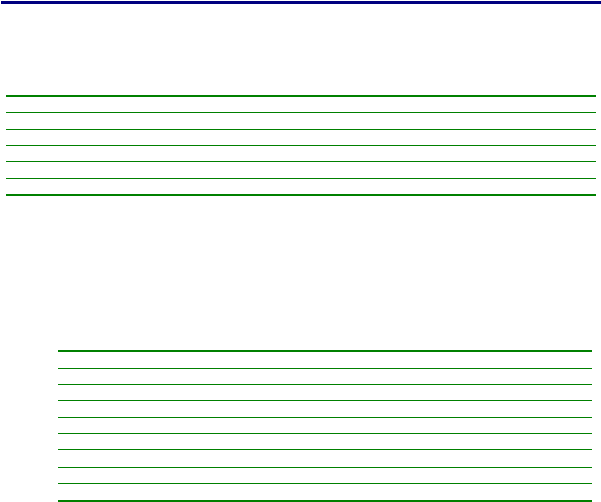
ZBasic System Library
284
ZBasic Microcontrollers
Type
Function returning UnsignedInteger
Invocation
ShiftInEx(dataPin, clkPin, bitCnt, flags)
ShiftInEx(dataPin, clkPin, bitCnt, flags, bitTime)
Parameter
Method
Type
Description
dataPin
ByVal
Byte
The pin used to input data.
clkPin
ByVal
Byte
The pin used to output a clocking signal.
bitCnt
ByVal
Byte
The number of bits to read in (1 to 16).
flags
ByVal
Byte
Flag bits controlling the operation.
bitTime
ByVal
int16
The optional duration of each bit in ticks (see description).
Discussion
This function can be used to input data from a synchronous serial device like a shift register. The pin
specified for input will be made an input but the pin specified for the clock signal must already be an
output and be at the desired initial logic level. The flags parameter controls how the shifting process is
performed as described in the table below.
Control Flag Definitions
Function
Hex Value
Bit Mask
MSB first
&H00
xx xx xx x0
LSB first
&H01
xx xx xx x1
Sample the input after the active clock edge
&H00
xx xx xx 0x
Sample the input before the active clock edge
&H02
xx xx xx 1x
Fastest possible bit time
&H00
xx xx x0 xx
Use the provided bitTime parameter
&H04
xx xx x1 xx
The active clock edge is the leading clock edge
&H00
xx xx 0x xx
The active clock edge is the trailing clock edge
&H08
xx xx 1x xx
The remaining bits are currently undefined but may be employed in the future.
For each of the number of bits specified, either the state of the data pin will be read and saved first or the
clock line will be changed to the opposite state first depending on bit 1 of the flags parameter. Finally,
the clock line will be returned to the original state thus completing one bit cycle.
If the flags parameter so specifies, the bitTime parameter value will be used to control the bit rate of
the shifting process. The units of the bitTime parameter are, by default, 1 CPU cycle (67.8ns at
14.7MHz). However, Register.TimerSpeed1 may be changed to adjust the controlling clock speed.
If the bitTime parameter is not provided or if the value given is zero, the shifting will occur at the
maximum rate.
Due to processing overhead the minimum bit time in the controlled speed mode is approximately 60 CPU
cycles (4µS at 14.7MHz). Attempting faster bit times in the controlled speed mode will produce undefined
results. Without speed control, the bit time is approximately 37 CPU cycles (2.5µS at 14.7MHz). Note
that the duty cycle of the clock signal will be closer to 50% in the controlled speed mode. Without speed
control, the active clock phase can be as little as 20% of the period.
The returned value consists of the data bits read arranged in MSB or LSB order as specified by the
flags parameter. If MSB order is specified, the first bit read will be in the most significant bit position of
the result. If LSB order is specified, the first bit read will be in the least significant bit position. If fewer
than 16 bits are read, the remaining bits will be zero.